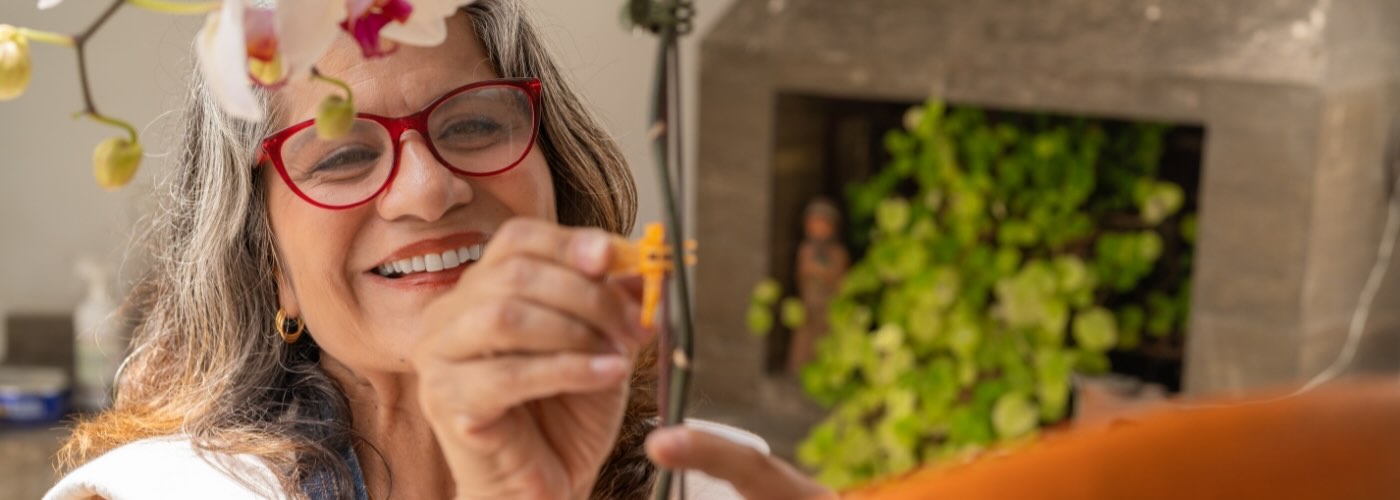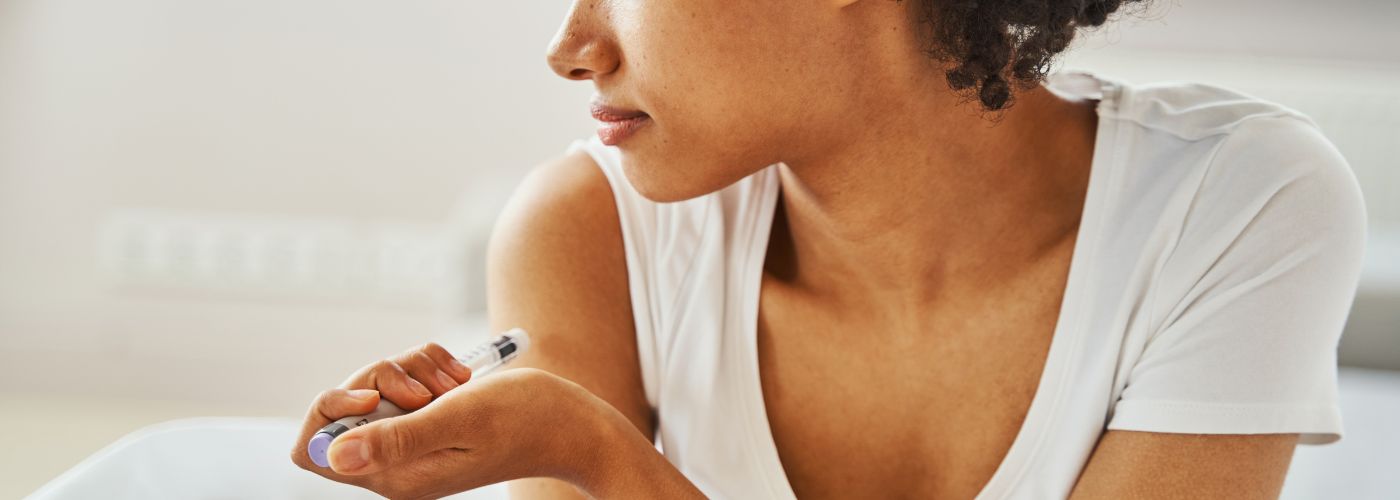
The vaginal microbiome is a thriving ecosystem that, when balanced, nurtures tissue health, maintains pH, protects against infection, and helps support the health of the vagina. The flora that lives “down there” is influenced by our habits and lifestyle decisions; the microbial response to those behaviors affects the resiliency of vaginal soft tissues and the ability to heal.
Researchers dipping into this space are finding its impact to be more far-reaching than once believed, affecting infection risk, pH balance, sexual wellness, and overall health.¹ In this light, a well-balanced microbiome may not only protect baseline vaginal health but also enhance recovery and outcomes from cosmetic gynecological interventions.
While research in this exact niche is limited, evidence from related gynecologic and surgical settings makes one point clear: healthy flora supports better outcomes.² Conversely, dysbiosis (an imbalance characterized by a loss of “good” bacteria and overgrowth of potentially harmful species) is associated with a higher risk of infections, irritation, and delayed healing.³⁻⁴ It makes sense if you think about the job healthy flora perform in warding off inflammation and unwelcome microbes.
The Vaginal Microbiome
The vaginal microbiome is a dynamic ecosystem of highly specialized microorganisms dominated primarily by Lactobacillus species, which help maintain an acidic pH. This acidity is a key defense mechanism, creating an inhospitable environment for pathogenic bacteria and fungi.
The composition of vaginal flora varies between individuals and can change over time in response to factors such as hormonal fluctuations, sexual activity, hygiene practices, diet, stress, and the use of medications like antibiotics.
Lactobacillus crispatus, L. jensenii, L. gasseri, and L. iners are the most commonly found vaginal microbes in reproductive-age women. These bacteria produce lactic acid and other antimicrobial compounds such as hydrogen peroxide and bacteriocins, which inhibit harmful microbes and help prevent infections like bacterial vaginosis (BV), yeast infections, and urinary tract infections.⁵
Some women’s vaginal microbiomes are dominated by Bifidobacterium species, which can provide protection similar to Lactobacillus colonies. While both types of bacteria produce lactic acid and adhere to the vaginal lining to block harmful microbes, Bifidobacterium differs in subtle ways: it typically produces less hydrogen peroxide, creates a slightly different balance of acids that help maintain pH, uses different surface molecules to compete with pathogens, and may interact with local immune signaling in ways that reduce inflammation.⁶
Disruptions to this microbial balance (dysbiosis) can lead to overgrowth of opportunistic pathogens. For instance, a decrease in Lactobacillus and an increase in anaerobic bacteria is often associated with bacterial vaginitis, which can cause odor, discharge, and discomfort. Dysbiosis may also increase susceptibility to sexually transmitted infections and influence outcomes in pregnancy, including preterm birth.⁷
Emerging research indicates that the vaginal microbiome interacts closely with the immune system and also communicates with the gut microbiome, helping to modulate local inflammation and maintain mucosal integrity; it suggests a systemic interplay that affects overall health.⁸ Probiotics, prebiotics, and lifestyle interventions that support healthy vaginal flora are being explored as strategies to prevent and treat dysbiosis with varying results depending on individual microbial composition.
How Does Eubiosis Relate to Vaginal Aesthetics?
Eubiosis refers to a balanced vaginal microbiome – one where beneficial bacteria dominate, the pH is maintained, and mucosal surfaces remain healthy. This balance helps prevent infection, reduces local inflammation, and supports tissue integrity, all of which can influence recovery and outcomes from vulvovaginal procedures.
Healthy vaginal flora keeps the mucosa well-lubricated and resilient. While the microbiome doesn’t change skin color or external appearance directly, maintaining eubiosis can prevent inflammatory changes or irritation that sometimes lead to redness, swelling, or other noticeable changes in vulvar tissue.
Dietary interventions, including probiotic supplementation, can support vaginal health and reinforce eubiosis. Many of the species found in over-the-counter probiotic supplements naturally colonize the vagina. Consuming these bacteria as part of a daily regimen can help maintain or restore microbial balance, particularly when antibiotics, hormonal changes, or other factors have disrupted natural flora.
The family of popular microbiome-targeted agents includes:
- Probiotics to bolster microbial diversity, enhance mucosal defenses, and help the immune system recognize and suppress potentially harmful microbes.
- Prebiotics that encourage the growth and activity of beneficial bacteria, supporting their persistence in the vaginal ecosystem.
- Synbiotics, formulations that pair probiotics with prebiotics, can improve survival and colonization of the beneficial microbes, increase the residence time of probiotic strains, enhance the ability of healthy microbes to adhere to epithelial surfaces, and strengthen the first line of defense against pathogenic invasion.
- Postbiotics, bioactive compounds (short-chain fatty acids, antimicrobial peptides, enzymes, and vitamins) produced by probiotic bacteria during metabolism, can modulate local immune responses, inhibit pathogen biofilms, and reinforce mucosal barriers.
Clinical studies suggest that pre-, pro-, syn-, and postbiotics stabilize vaginal pH, help restore healthy vaginal flora, protect the vaginal ecosystem, encourage cooperative microbial activity, dissolve the coatings that pathogenic bacteria use to take hold, and reduce the recurrence of infections, all of which limit inflammatory changes within the vagina.⁹
In practical terms, this means the tissue environment is more likely to remain calm, resilient, and responsive to healing after procedures such as laser rejuvenation, labial contouring, or vaginal tightening. A few self-care habits can also tip the balance in your favor and amplify procedural outcomes:
- Consuming fiber-rich and fermented foods to nourish microbial diversity
- Staying hydrated and limiting excess processed sugar to help maintain pH balance
- Avoiding harsh soaps or unnecessary douching to preserve the mucosal barrier
- Engaging in regular exercise and mindfulness practices to modulate systemic inflammation, indirectly supporting vaginal flora
From supporting mucosal integrity and modulating inflammation to protecting against infection, eubiosis sets the stage for smoother recovery and optimal results.
At Aayla Sexual and Aesthetic Wellness, we combine advanced cosmetic gynecology techniques with a holistic understanding of vaginal health. By addressing both external outcomes and internal balance, patients receive care designed to optimize recovery, comfort, and long-term wellness.
Whether you’re exploring labiaplasty, rejuvenation, or clitoral hood reduction, supporting your microbiome alongside expert procedural guidance can make a meaningful difference in both function and appearance.
Reach out to Dr. Taghechian to learn how you can optimize your microbiome for the best possible results and a renewed sense of self.
Already prepared? Schedule an appointment to take back control of your sexual wellness and overall happiness!
References:
- Tuniyazi, M., & Zhang, N. (2023). Possible Therapeutic Mechanisms and Future Perspectives of Vaginal Microbiota Transplantation. Microorganisms, 11(6), 1427. https://doi.org/10.3390/microorganisms11061427.
- Occhino, J. A., Byrnes, J. N., Wu, P. Y., Chen, J., & Walther-Antonio, M. R. (2024). Preoperative vaginal microbiome as a predictor of postoperative urinary tract infection. Scientific reports, 14(1), 28990. https://doi.org/10.1038/s41598-024-78809-1.
- Ziogou, A., Ziogos, E., Giannakodimos, I., Giannakodimos, A., Sifakis, S., Ioannou, P., & Tsiodras, S. (2023). Bacterial Vaginosis and Post-Operative Pelvic Infections. Healthcare (Basel, Switzerland), 11(9), 1218. https://doi.org/10.3390/healthcare11091218.
- Han, Y., Liu, Z., & Chen, T. (2021). Role of Vaginal Microbiota Dysbiosis in Gynecological Diseases and the Potential Interventions. Frontiers in microbiology, 12, 643422. https://doi.org/10.3389/fmicb.2021.643422.
- Chen, X., Lu, Y., Chen, T., & Li, R. (2021). The Female Vaginal Microbiome in Health and Bacterial Vaginosis. Frontiers in Cellular and Infection Microbiology, 11. https://doi.org/10.3389/fcimb.2021.631972.
- Pagar, R., Deshkar, S., Mahore, J., Patole, V., Deshpande, H., Gandham, N., Mirza, S., Junnarkar, M., & Nawani, N. (2024). The Microbial Revolution: Unveiling the Benefits of Vaginal Probiotics and Prebiotics. Microbiological Research, 286. https://doi.org/10.1016/j.micres.2024.127787.
- Chen, X., Lu, Y., Chen, T., & Li, R. (2021). The Female Vaginal Microbiome in Health and Bacterial Vaginosis. Frontiers in Cellular and Infection Microbiology, 11. https://doi.org/10.3389/fcimb.2021.631972.
- Amabebe, E., & Anumba, D. O. C. (2020). Female Gut and Genital Tract Microbiota-Induced Crosstalk and Differential Effects of Short-Chain Fatty Acids on Immune Sequelae. Frontiers in immunology, 11, 2184. https://doi.org/10.3389/fimmu.2020.02184.
- Pagar, R., Deshkar, S., Mahore, J., Patole, V., Deshpande, H., Gandham, N., Mirza, S., Junnarkar, M., & Nawani, N. (2024). The Microbial Revolution: Unveiling the Benefits of Vaginal Probiotics and Prebiotics. Microbiological Research, 286. https://doi.org/10.1016/j.micres.2024.127787.












